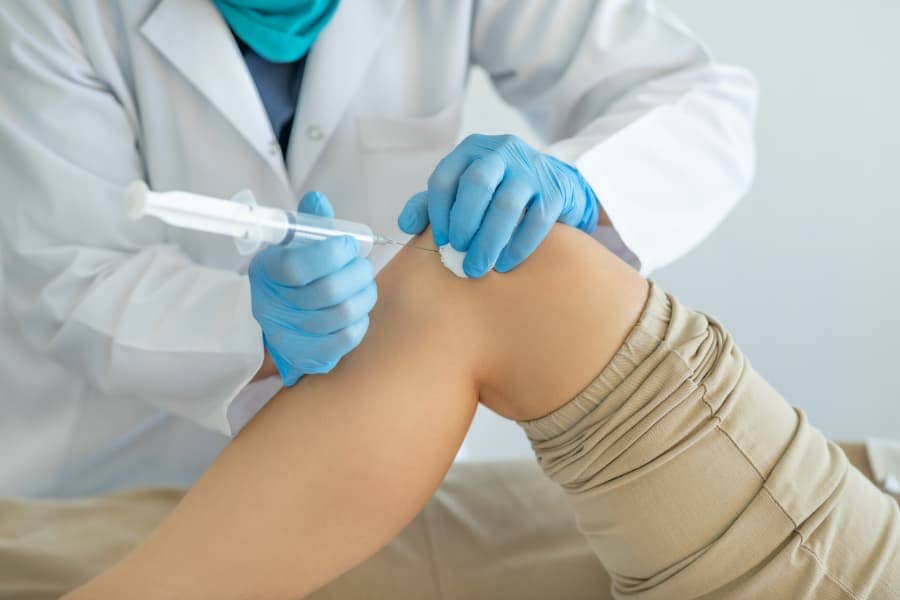When patients receive an arthritis diagnosis, they naturally want to find out more about treatment options for this often-painful condition. In conjunction with physical therapy or oral medications, arthritis injections may be an additional course of action recommended by the doctors at High Mountain Orthopedics, located in Wayne, NJ. Most arthritis injections take place in the doctor’s office, where medicines and other compounds are introduced directly into the joint that is experiencing pain. Depending on the condition, one of several types of injections may be prescribed. We take a closer look here.
Hyaluronic Acid
This acid naturally lubricates the joints and usually is used as an arthritis injection for the knee. Patients receive a series of shots that can relieve pain and inflammation, for up to six months in some cases. This treatment is most often used for patients with less severe symptoms.
Hyaluronic acid is sometimes prescribed if previous corticosteroid treatments were not effective for controlling arthritis symptoms. When patients are not able to take painkillers for their symptoms, doctors may prescribe hyaluronic acid injections. And in patients with diabetes, hyaluronic acid injections can be preferred over corticosteroids, which have been shown to raise blood sugar levels.
Corticosteroids
When patients need to reduce swelling and inflammation of the hands, knees, hips, ankles, or another area of the body, corticosteroids may be the choice for arthritis injections. Sometimes a mixture of corticosteroid and a numbing agent is used to help patients with advanced arthritis gain mobility and reduce swelling in the months leading to corrective surgery, such as arthroscopy or knee replacement. Corticosteroids can offer fast relief of flareups, and the effects can last for months.
Usually, doctors recommend only a few injections into one joint per year, but this depends on the patient’s symptoms. Corticosteroid arthritis injections are inserted directly into the joint, usually in the doctor’s office. When treating the spine, or another complex area of the body, imaging technology can be used to position the needle.
Platelet-Rich Plasma
A less commonly known type of arthritis injection is platelet-rich plasma, which is made from the patient’s blood. Once drawn, the blood is separated using a centrifuge and the resulting proteins and platelets are injected into the arthritic joint. Dosages vary from one shot per treatment to a series of several shots given to the patient over two or three weeks.
Platelet-rich plasma can help with the pain and swelling of arthritis by introducing anti-inflammatory chemicals into the area. Most often used for patients who experience moderate arthritis pain in the knee, platelet-rich plasma also is used in other joints, such as shoulders.
Side Effects
Patients who are considering arthritis injections should be aware that they may experience side effects. While these are low-risk and vary by individual, side effects of arthritis injections include:
- Irritation to nerves
- Infection and pain at the injection site
- Infection of the joint
- Thinning of cartilage and weakening of ligaments, with multiple injections
- Temporary increase of fluid in the joint
- Increase of inflammation
Patients should bring up any concerns about side effects with their doctor before receiving the shot.
Get Medical Advice about Arthritis Injections
Whether a patient is experiencing mild, moderate, or severe symptoms of arthritis, meeting with a doctor is the first step toward relief. A combination of treatments, such as hot/cold therapies, over-the-counter anti-inflammatories, physical therapy, and arthritis injections may help maintain flexibility and movement. For more information about injections to treat arthritis or to schedule an appointment, contact High Mountain Orthopedics, located in Wayne, NJ. We’ll be happy to help you determine whether this is the best course of treatment for your symptoms.

